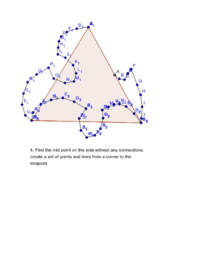
On the next page, we'll see tiles that DO flip over. The cats and the ducks are also "tiles" that translate/slide/glide left or right, up or down, to fill in the picture. However tiles are usually geometric shapes rectangles or squares as a rule, though triangles or hexagons would be possible too. An obvious example would be tiles on a wall.

Now take a look at the other pictures on this page. out my new free resource to go with this video: 'The Little Book of Tessellation: Beginner's Edition' at. What is a tessellation Any regular pattern consists of identical areas, which repeat without overlaps or gaps. The original line XY is "translated" along the Y axis to make line X 1Y 1. In math class, we'd say that we can move a line along a graph by saying "X=Y" for the original line and "X 1 + 4 = Y 1" for the line that would be 4 boxes above it on a piece of graph paper. So, why do we call it "translation"? Well, we call that movement a "translation" because we "translate" the tile along the X-axis and the Y-axis. In glide reflection, translation and reflection are used concurrently much like the following piece by Escher, Horseman. Rotations always have a center and they also have an angle of rotation. This kind of tessellation symmetry- tile repeating- is called Translation and/or Sliding. A good example of a rotation is one 'wing' of a pinwheel that turns around the center point. The tiles in this picture are copies of one another that are simply shifted from one place to another, without tilting or flipping them over or resizing them. The tessellation is made by repeating the tile over and over again, and fitting all the copies of the tile together. This is the basic "tile" shape of the first tessellation on this page.

Tessellation rotation example how to#
How to Make an Asian Chop (stone stamp).


 0 kommentar(er)
0 kommentar(er)
